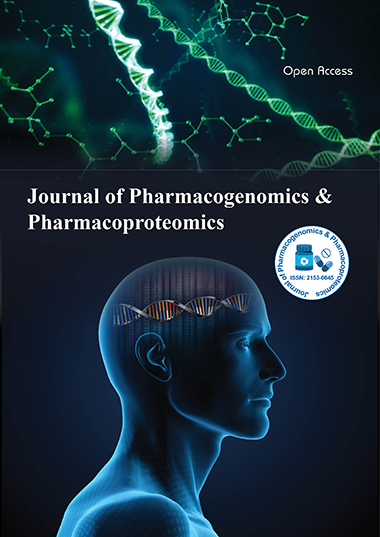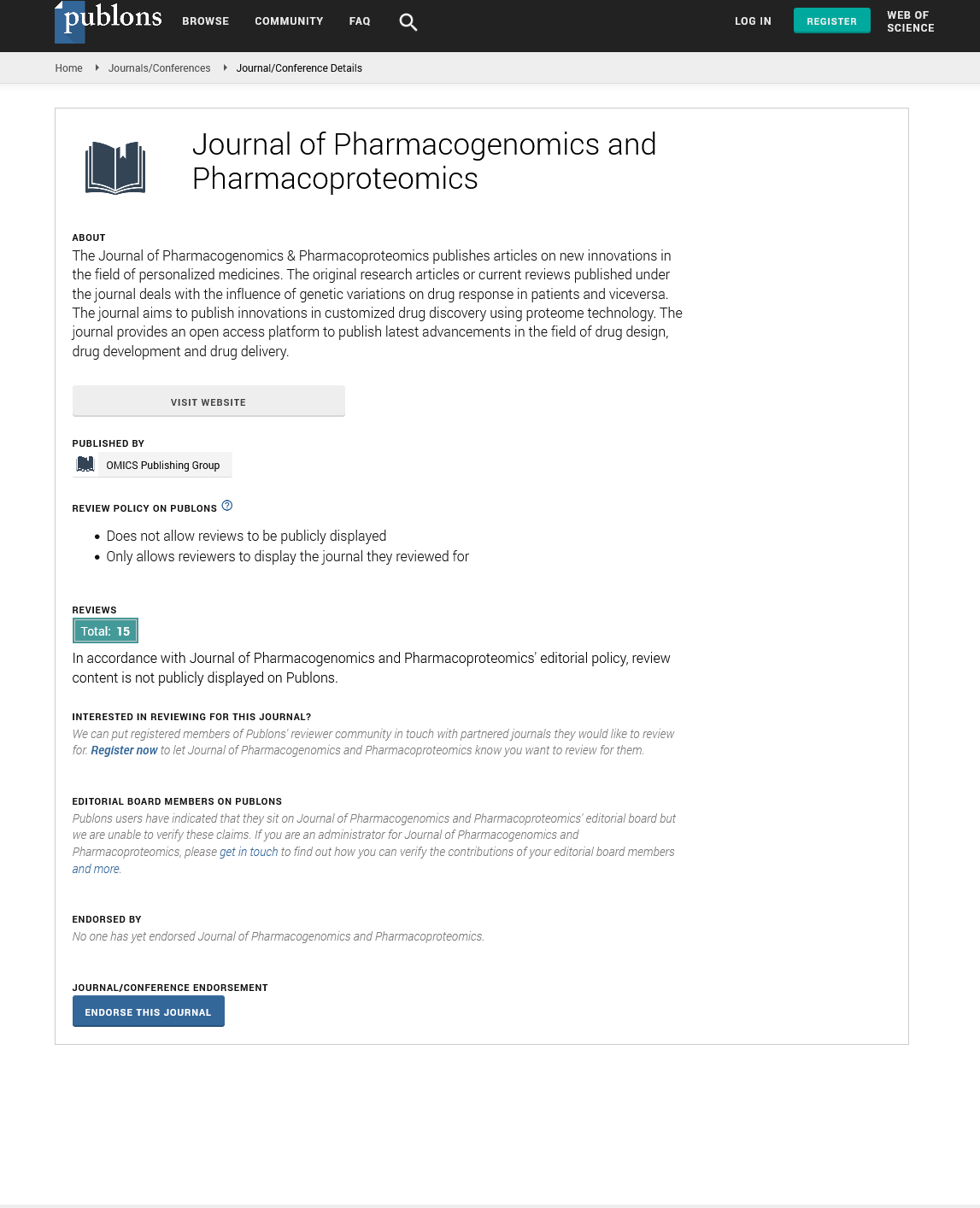Indexed In
- Open J Gate
- Genamics JournalSeek
- Academic Keys
- JournalTOCs
- ResearchBible
- Electronic Journals Library
- RefSeek
- Hamdard University
- EBSCO A-Z
- OCLC- WorldCat
- Proquest Summons
- SWB online catalog
- Virtual Library of Biology (vifabio)
- Publons
- MIAR
- Euro Pub
- Google Scholar
Useful Links
Share This Page
Journal Flyer

Open Access Journals
- Agri and Aquaculture
- Biochemistry
- Bioinformatics & Systems Biology
- Business & Management
- Chemistry
- Clinical Sciences
- Engineering
- Food & Nutrition
- General Science
- Genetics & Molecular Biology
- Immunology & Microbiology
- Medical Sciences
- Neuroscience & Psychology
- Nursing & Health Care
- Pharmaceutical Sciences
Commentary - (2023) Volume 14, Issue 1
Genetic Factors Influencing the Development of Child Brain and Risk of Neuropsychiatric Disorders
Dawson J*Received: 02-Jan-2023, Manuscript No. JPP-23-19749; Editor assigned: 06-Jan-2023, Pre QC No. JPP-23-19749 (PQ); Reviewed: 13-Jan-2023, QC No. JPP-23-19749; Revised: 27-Jan-2023, Manuscript No. JPP-23-19749 (R); Published: 03-Feb-2023, DOI: 10.35248/2153-0645.22.14.032
Description
Genetic variations and brain imaging characteristics historically, the research has concentrated on adults and adolescents very few imaging genetics studies on brain development in infancy and early childhood have been conducted from birth to age of six. This is a significant knowledge gap because developmental changes in the brain during the prenatal and early postnatal period are regulated by dynamic gene expression patterns, which are likely to play a role in determining an individual's risk for later mental illnesses and neurodevelopmental disabilities.
We synthesise findings from genetics research ranging from infancy to early childhood, with a focus on investigations assessing genetic risk for neuropsychiatric diseases. Children with intellectual disability frequently have multiple co-morbid neuropsychiatric conditions and poor physical health. Imaging genetics discloses a lot about genetic influences on structural and functional imaging phenotypes but it has mostly concentrated on teenage or adult human brains until recently. This is a significant constraint because the most dynamic period of human brain development occurs from prenatal life to early childhood. Disrupted gene expression throughout this time period can result in lifelong alterations in brain anatomy and function. Even common genetic variants can influence early neurodevelopmental processes, raising the chance of mental disorders enter in life. Many brain traits are heritable in early childhood, according to the research. Genetic factors explain approximately 85% of the variance in worldwide White Matter Volumes (WMV) and 56% of the variance in global Gary-Matter Volumes (GMV) at 1 month of age, although head size heritability is minimal. In contrast, heritability more than 80% for all three traits has been recorded in investigations of older children and adults. Individual differences in regional CT and SA appear to be caused by a shared set of hereditary variables impacting global cortical organization.
The pattern of results in both cases parallels temporal variations in gene expression, which demonstrate large geographical disparities in fetal development but not postnatal development. Finally, genetic influences on resting state functional magnetic resonance phenotypes were investigated. Specific genes studies search for associations between phenotypic results and genetic variation in genes thought to affect organ physiology or development. Selection in genetics is frequently based on hypothesized involvement in mental disorders.
The candidate gene analysis of neonatal brain imaging phenotypes focused on global and local brain tissue volumes, as well as many genes play roles in brain development. Polygenic Risk Scores (PRS) predict an individual's susceptibility to a complex characteristic many well-powered GWAS of mental and neurodevelopmental conditions have been produced by efforts such as the mental Genome-Wide Association Studies (GWAS) consortium, including mental disorders, Major Depressive Disorder (MDD), bipolar disorder. Summary statistics are frequently made accessible for free, and researchers can obtain particular data from restricted-access archives. Imaging genomic investigations on new-burns and young children show that mental disorder-associated polymorphisms alter early neurodevelopment both independently and through interactions with environmental factors. Furthermore, GWAS investigations of neonates and preterm new-borns child have identified additional genes, polymorphisms, and molecular pathways involved in brain development. However, the majority of the findings have not been independently repeated. Existing studies, regardless of methodology, are tiny and do not include people of different families. The origins programme addresses these constraints by developing and combine the most comprehensive and varied genomes.
Citation: Dawson J (2023) Genetic Factors Influencing the Development of Child Brain and Risk of Neuropsychiatric Disorders. J Pharmacogenom Pharmacoproteomics. 14:032.
Copyright: © 2023 Dawson J. This is an open-access article distributed under the terms of the Creative Commons Attribution License, which permits unrestricted use, distribution, and reproduction in any medium, provided the original author and source are credited.

